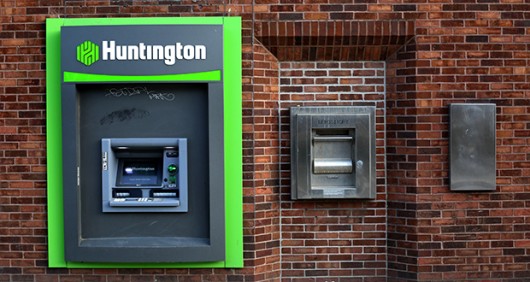Money weighs heavily on most college students’ minds, and a new study is finding that fees abound in many accounts students take out while at a university.
A recent study published in March by the Center for Responsible Lending study found that Ohio State’s partnership with Huntington was the only program of its kind to offer a 24-hour grace period if a student overdrew their account, but experts say this doesn’t mean it’s the best choice for students when they pick a bank.
The study looked at eight schools paired with their respective banks that had the largest student enrollment and offered a co-sponsored account. It also looked at “financial institutions identified by the Government Accountability Office as having the largest partnering market shares across schools,” the CRL study research report said.
OSU, the University of Central Florida, Miami-Dade College, Arizona State University, Penn State University, University of Minnesota, California State-Fullerton and Texas A&M were included in the study, along with their co-sponsored banks.
Leslie Parrish, the deputy research director at the Center for Responsible Lending and one of the authors of the study, said that when many schools and individuals are looking for a bank or banking partner, they might overlook back-end fees like overdraft protection.
“If you do end up overdrawing your account, it’s much more expensive than maybe a $3 monthly fee,” Parrish said. “We really wanted to bring attention to that. People shouldn’t just shop based on the monthly fee, but other things as well.”
OSU signed a 15-year contract with Columbus-based Huntington on Feb. 12, 2012. Huntington paid an initial $25 million to OSU — to go toward “scholarships, education and alumni giving,” according to its website — and promised to supply an additional $100 million in loans and investments for OSU to work on improving the University District area.
Huntington had the lowest overdraft fees of $23 for the student’s first time, and $37.50 for every subsequent time. The bank with the highest fee per incident was TCF Bank at $37 per overdraft, according to the study. However, at Huntington, no fee is charged if the student can get his or her account positive by the next business day.
“The only issue with that is, if you’re a student, can you get funds in two days to put into your account to bring it up to zero? Some people may be able to, either they already have income coming in, or they have financial aid coming in, or maybe their parents will help them out, other people may not,” Parrish said. “So, it’s kind of a matter of timing.”
Out of the eight banks, four did not charge students an extended overdraft fee, where Huntington charged $25 if an account is overdrawn five or more days, and an additional $25 fee was charged each subsequent week if it remains overdrawn. Along with Huntington, U.S. Bank, MidFirst and PNC also had extended overdraft plans enacted.
Huntington also had the second-highest maximum possible overdraft cost per day at $150, and TCF Bank was the highest at $185 per day. The lowest listed cost was Higher One-Premier and Higher One-Basic at $114, according to the study.
“Just based on the number of overdraft fees allowed in a single day, students can quickly amass over $100 in overdraft fees before they are aware they are overdrawn. For example, a student with a TCF account could be charged up to $185 daily,” the study said.
Aamir Nabeel, a third-year in psychology, said he has a Huntington account with overdraft protection, and when he did overdraft, he was able to get funds before the grace period was over.
“I think it’s awesome, it gives people time. Sometimes you don’t even know that you’ve taken that much out, and sometimes you forget,” Nabeel said. “It’s nice that you have a day to put money in so you don’t get charged.”
The study found that the students who overdraw their accounts the heaviest are paying about $700 in fees per year, with Huntington’s estimated annual cost of overdraft occurrences being at about $598, adjusting for the grace period. The bank with the highest estimated annual cost was U.S. Bank at $809.
Steve Roberts, director of university banking at Huntington, said in an email that the OSU Huntington branches are trained to educate students about managing a checking account.
Among other things, Roberts said good account management included monitoring balances and transactions, along with opening a savings account and linking it to a checking account as overdraft protection.
“A key part of our approach to our student customers is financial education starting from the time they open an account with us, but also anytime they have questions either through a Huntington banker, or through our support of financial education programming in the Office of Student Life’s Student Wellness Center,” Roberts said in an email.
The final part of the study said there are many bank accounts with “consumer-friendly features,” but these bank accounts are not necessarily the ones offered through school-bank partnerships. It also said many of these exclusive deals for students have “no better overdraft policies than accounts that a student could find on their own.”
Parrish advised students not to opt in for overdraft protection, no matter which bank they have an account with, and to research all possible options before deciding on a bank.
“Don’t assume that your school is offering the best account that is on the market for you,” Parrish said. “Definitely look at what your school is offering, but also look at other accounts.”



